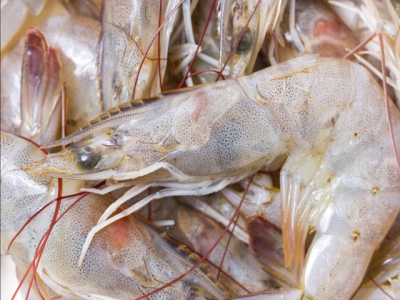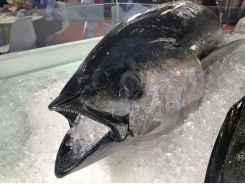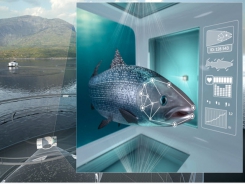The case against eyestalk ablation in shrimp aquaculture

A researcher whose trials suggest that eyestalk ablation in shrimp is not only unnecessary but also potentially counter-productive, has made the shortlist for this year’s GOAL innovation award.
Eyestalk ablation is widely practiced in shrimp hatcheries as a means to encourage female shrimp broodstock to produce more eggs. However, it raises serious welfare concerns and the work of postdoctoral researcher Simao Zacarias suggests that ablation produces offspring that are more prone to disease.
As detailed in an article in today’s Global Aquaculture Advocate, Zacarias’ research in vannamei shrimp hatcheries in Honduras and Thailand showed higher survival rates in in juvenile shrimp from non-ablated broodstock when they were challenged with early mortality syndrome (EMS) and white spot syndrome virus (WSSV).
The University of Stirling post-doc also argues that providing high quality, nutritious feed to broodstock in their pre-maturation stage, shrimp farmers can achieve a similar egg production rate without resorting to eyestalk ablation.
“A dry and fresh feed composed of squid and polychaete stimulates broodstock to mature faster, leading to improved results in the breeding tanks,” he told the Advocate. “Altering broodstock’s exposure to light, coupled with the high-quality feed, can enhance those results.”
Another means to achieving the same egg production rate is managing the sex ratio in breeding tanks and increasing the ratio of male-to-female shrimp from 1:1 to 1:2.
“We proved in my research that if you manage the sex ratio you’ll have similar productivity to that achieved with eyestalk ablation,” he noted.
While this requires hatcheries to double the number of female shrimp in their breeding tanks, it would not necessarily double their costs, because eyestalk ablated females have a high mortality rate.
“If you don’t ablate you have a lower mortality rate of broodstock. We’re hoping to do an analysis in Thailand by the end of the year that will deliver the full economic impact of using non-ablated animals,” he said.
“But from anecdotal information shared by hatchery managers I’ve learned that over time, with the next generation of non-ablated broodstock, you don’t need to increase that breeding ratio to achieve the same results. The shrimp will reproduce naturally when given a high-quality supplemental feed.”
Zacarias’ work is driven by the demand for better animal welfare practices in shrimp hatcheries – with ablation regularly cited as a major welfare issue by anti-aquaculture and animal rights campaigners.
“Consumers in Europe and America are demanding a product produced with high welfare, so if you cease eyestalk ablation you have access to a greater market share. This innovation can be expected to become a key health strategy in shrimp farming going forward.”
Zacarias and two other finalists will present at GAA’s upcoming virtual GOAL 2020 conference, on 6-8 October, where GOAL attendees will vote to select the winner.
Related news
Tools

Phối trộn thức ăn chăn nuôi

Pha dung dịch thủy canh

Định mức cho tôm ăn

Phối trộn phân bón NPK

Xác định tỷ lệ tôm sống

Chuyển đổi đơn vị phân bón

Xác định công suất sục khí

Chuyển đổi đơn vị tôm

Tính diện tích nhà kính

Tính thể tích ao




 An €8 million incentive for integrated multi-trophic aquaculture
An €8 million incentive for integrated multi-trophic aquaculture  Shrimp bacteriophage nears commercial launch
Shrimp bacteriophage nears commercial launch